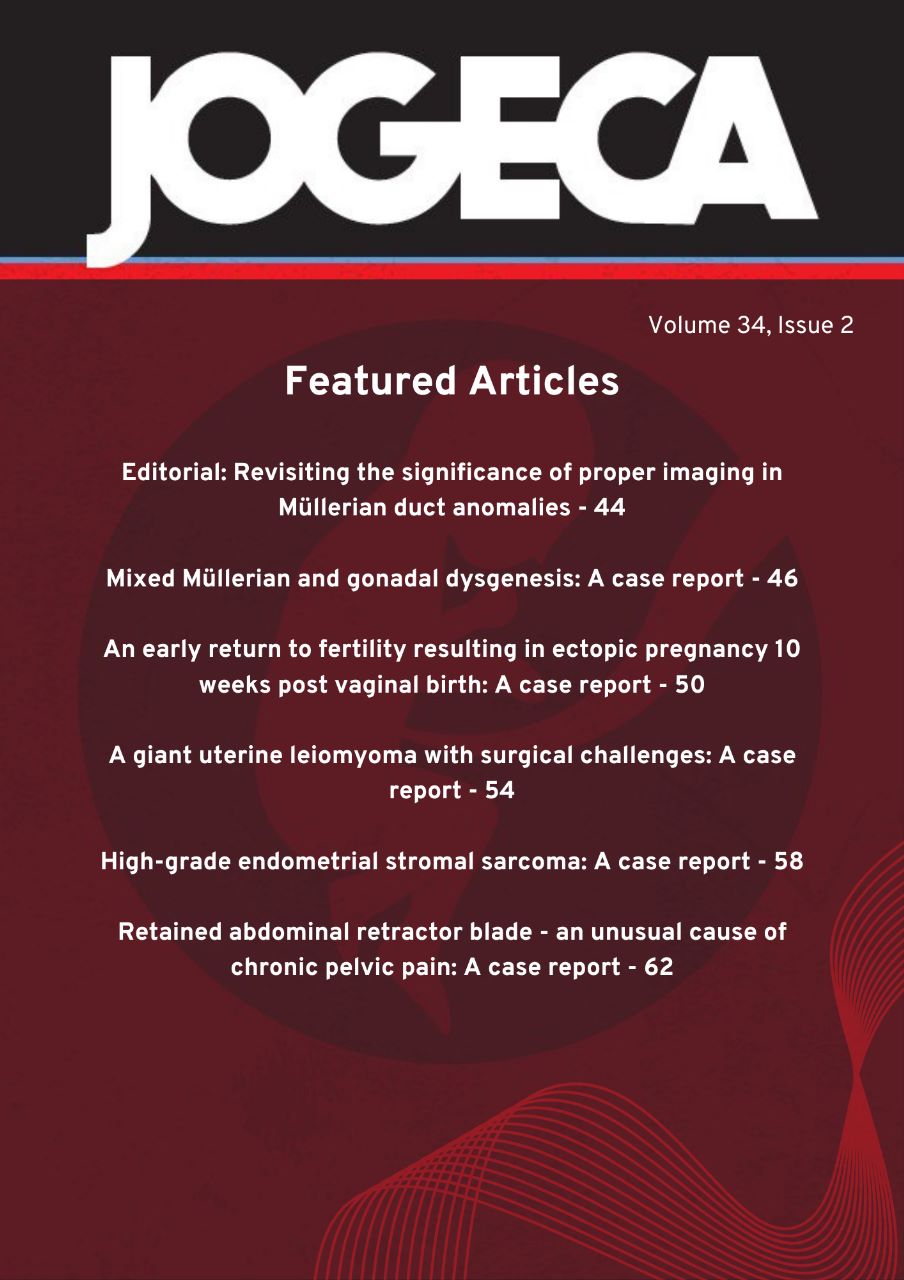Female pelvic dimensions relevant to labour process in a black Kenyan population
DOI:
https://doi.org/10.59692/jogeca.v28i2.339Keywords:
Female pelvic dimensions, Black Kenyan population, Progress of labour, Obstetric outcomes, Cephalo pelvic disproportionAbstract
Introduction: Maternal pelvic dimensions are key to determining progress and outcome of labour. In addition, the size of the pelvis is a crucial reference point in attempting to predict cephalopelvic disproportion. There is paucity of data regarding pelvic dimensions amongst black Kenyan population despite the central significance of such data in local obstetrics practice.
Methods: A cross-sectional study of 50 female pelvic osteology specimens was performed at the National Museums of Kenya, Nairobi. Data were collected using a structured study instrument and were analyzed using Statistical Pack age for Social Sciences version 21.
Results: At the pelvic inlet, the true conjugate was 10.37 ± 1.02cm, the diagonal conjugate was 11.72 ± 1.07cm and the obstetric conjugate was 11.44 ± 0.78cm. The transverse diameter was 11.42 ± 0.96cm. In the mid-cavity, the anteroposterior diameter was 10.64 ± 1.00cm, while the interspinous diameter was 8.49 ± 0.92cm. At the outlet, the anteroposterior diameter was 9.66 ± 1.16cm, while the intertuberous diameter was 9.04 ± 0.92cm. The subpubic angle was 74.54 ± 9.72 degrees. The posterior depth was 9.95 ± 1.11cm, while the anterior depth was 3.24 ± 1.41 cm.
Conclusion: The average pelvic dimensions in this population are smaller than what has been observed in other populations. Of significance is that some morphometric dimensions were ominously smaller than what has been implicated in cephalopelvic disproportion. Imaging and clinical studies would help shed more light on correlation of the dimensions and obstetric outcomes in black Kenyan population.
Downloads
Published
How to Cite
Issue
Section
Categories
License
Copyright (c) 2016 Authors

This work is licensed under a Creative Commons Attribution 4.0 International License.




